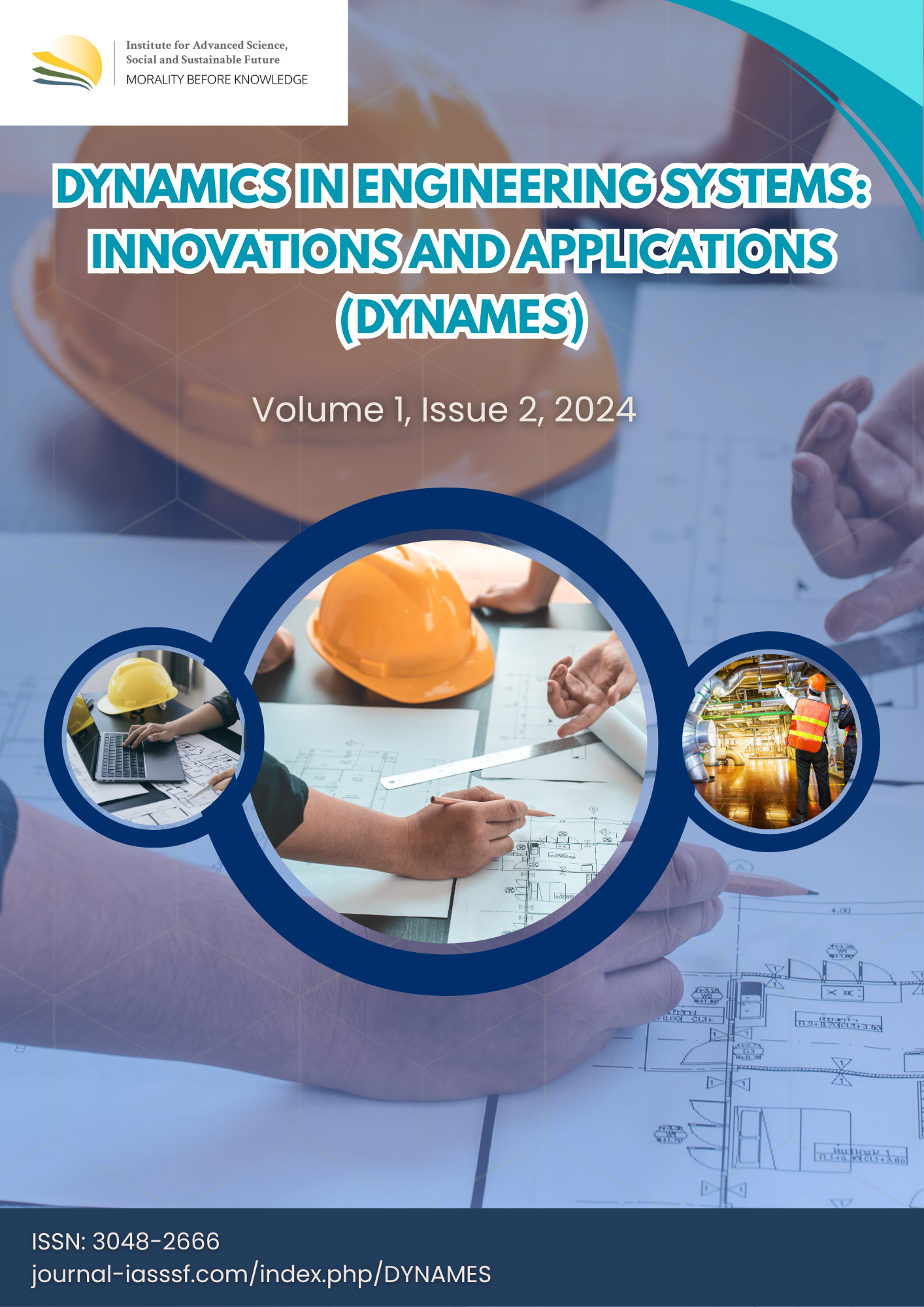The potentials of jackfruit (Artocarpus heterophyllus) skin wastes as a supercapacitor biomaterials
DOI:
https://doi.org/10.61511/dynames.v1i2.1301Keywords:
biommaterials, jackfruit peel waste, supercapacitorsAbstract
Background: In modern times, the use of electrical energy cannot be separated from everyday life. The consumption of electrical energy in Indonesia itself is increasing along with the increasing number of people who use electrical energy as lighting and electrical equipment to support comfort in everyday life. Indonesia is one of the countries with abundant biological wealth, one of which is jackfruit (Artocarpus heterophyllus) which is very popular for consumption by all groups. Where jackfruit skin has a lot of content that can be utilized. Methods: Therefore, researchers are interested in examining "The Potential of Jackfruit Peel Waste as a Supercapacitor Biomaterial". The experimental design used is a complete randomized design (CRD) with two treatments, each treatment is repeated three times, namely: P-1 : Activation of 0.1 M NaCl in solid form. P-2 : Activation of 50% HCl concentration in the form of solids. Findings: The highest average voltage indicator produced is in P-1. The highest average for lights on is 0.053. The highest average for lights to stay on when removed is 0.003. The highest average for the length of time the lights stay on when the battery is removed after 10% slow motion is 0.0067 seconds, and the highest average voltage is 0.073 volts. ash is formed more densely so that it produces electricity more stably than the others. Conclusion: The minimum voltage that can be used for electrical energy sources is 1.3 volts and the size of the voltage can be influenced by the water content, calcium, sodium, magnesium in the fruit peel and the level of fruit maturity. Novelty/Originality of This Study: This study introduces the novel use of jackfruit peel waste as a supercapacitor biomaterial, highlighting its potential as an alternative, sustainable energy source through experimental voltage performance analysis.
References
Andriani, R., Taer, E., & Iwantono, Y. (2010). Pengaruh Ketebalan Elektroda terhadap Nilai Kapasitansi Spesifik dan “Retained Ratio” Serbuk Gergaji Kayu Karet untuk Pembuatan Superkapasitor. Universitas Riau.
Apriani, R., Faryuni, I. D., & Wahyuni, D. (2013). Pengaruh konsentrasi aktivator kalium hidroksida (KOH) terhadap kualitas karbon aktif kulit durian sebagai adsorben logam Fe pada air gambut. Prisma Fisika, 1(2). https://doi.org/10.26418/pf.v1i2.2931
Arif, E. N., Taer, E., & Farma, R. (2015). Pembuatan dan Karakterisasi Sel Superkapasitor Menggunakan Karbon Aktif Monolit dari Kayu Karet Berdasarkan Variasi Konsentrasi Hno 3. Riau University.
Aziz, H., Tetra, O. N., Alif, A., Syukri, S., & Perdana, Y. A. (2017). Performance karbon aktif dari limbah cangkang kelapa sawit sebagai bahan elektroda superkapasitor. Jurnal Zarah, 5(2), 1-6. https://doi.org/10.31629/zarah.v5i2.208
Burke, A. (2000). Ultracapacitors: why, how, and where is the technology. Journal of power sources, 91(1), 37-50. https://doi.org/10.1016/S0378-7753(00)00485-7
Conway, B. E. (2013). Electrochemical supercapacitors: scientific fundamentals and technological applications. Springer Science & Business Media.
Fajarini., Taer, E., & Sugianto. (2016). Pengaruh variasi aktivasi KOH pada elektroda karbon dari tempurung kelapa terhadap sifat fisis superkapasitor. Universitas Riau.
Fitriana, V. N. (2014). Sintesis dan karakterisasi superkapasitor berbasis nanokomposit TiO2/C. Universitas Negeri Malang.
Hakim, L. (2008). Kontrol Ukuran dan Dispersitas Nanopartikel Besi Oksida. Universitas Indonesia.
Kötz, R., & Carlen, M. J. E. A. (2000). Principles and applications of electrochemical capacitors. Electrochimica acta, 45(15-16), 2483-2498. https://doi.org/10.1016/S0013-4686(00)00354-6
Lu, S., Song, Y., Guo, K., Chen, X., Xu, J., & Zhao, L. (2018). Effect of aqueous electrolytes on the electrochemical behaviors of ordered mesoporous carbon composites after KOH activation as supercapacitors electrodes. Journal of Electroanalytical Chemistry, 818, 58-67. https://doi.org/10.1016/j.jelechem.2018.04.025
Muchammadsam, I. D., Taer, E., & Farma, R. (2015). Pembuatan Dan karakterisasi karbon aktif monolit dari kayu karet dengan variasi konsentrasi KOH untuk aplikasi superkapasitor. Riau University.
Nur, V. (2014). Sintesis dan Karakterisasi Superkapasitor Berbasis Nanokomposit TiO2 /C. http://jurnalonline.um.ac.id/data/artikel/artikel23FB18454A44379219E AFCFEE4AAA681.pdf
Riyanto, A. (2014). Superkapasitor sebagai piranti penyimpan energi listrik masa depan. Jurnal Ilmiah Pendidikan Fisika Al-Biruni, 3(2), 56-63. https://doi.org/10.24042/jipfalbiruni.v3i2.73
Rosi, M., Ekaputra, M. P., Iskandar, M., Abdullah., & Khairurrijal. (2012). Superkapasitor Menggunakan Polimer Hidrogel Elektrolit dan Elektroda Nanopori Karbon. Prosiding Seminar Nasional Material 2012, Institut Teknologi Bandung.
Saha, G. B., & Saha, G. B. (2004). Fundamentals of nuclear pharmacy. Springer.
Sani, S. (2012). Activated Carbon Production From Turf Soil. Jurnal Teknik Kimia, 5(2), 400-406. https://doi.org/10.33005/jurnal_tekkim.v5i2.144
Sucipto, A. (2012). Kulit Buah Jadi Sumber Listrik. Kompas. http://sains.kompas.com/read/2012/12/17/15501327/Kulit.Buah.Jadi.Su mber.Listrik
Suharyadi, E., & Wibowo, A. (2013). Superkapasitor menggunakan polimer hidrogel elektrolit dan elektroda nanopori karbon.
Sofwan, A. G. (2013). Pengaruh Ibuprofen Nanopartikel terhadap Disolusi, Bioavailabilitas dan Efek Analgetik Secara in Vivo. Universitas Sumatera Utara.
Taer, E., Zulkifli., Syech, R., & Taslim, R. (2015). Sifat Elektrokimia Superkapasitor menggunakan Karbon dari Kayu Karet. Universitas Simpang Baru Pekanbaru.
Thangavel, R., Kannan, A. G., Ponraj, R., Thangavel, V., Kim, D. W., & Lee, Y. S. (2018). High-energy green supercapacitor driven by ionic liquid electrolytes as an ultra-high stable next-generation energy storage device. Journal of Power Sources, 383, 102-109. https://doi.org/10.1016/j.jpowsour.2018.02.037
Wulandari, A. T. (2015). Selulosa Kulit Buah Nangka Muda (Artocarpus heterophyllus) Sebagai Biosorben Logam Berat Tembaga (Cu). Universitas Atma Jaya Yogyakarta.
Downloads
Published
How to Cite
Issue
Section
Citation Check
License
Copyright (c) 2024 Putu Cinty Vidyanidhi

This work is licensed under a Creative Commons Attribution 4.0 International License.














